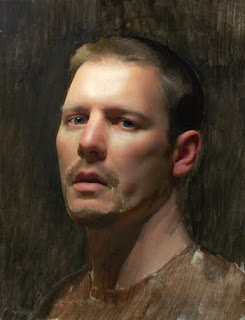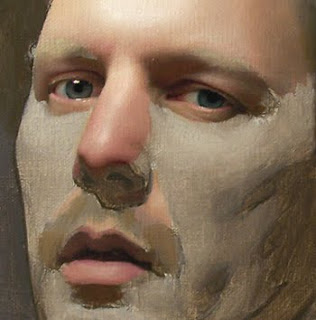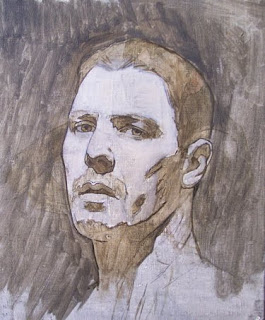 In figure 1 you can see how the size of the light source determines the degrees of a convexity that reflect the highlight at the angle of incidence = angle of reflection. If you imagine a point on one end of the light source and its geometry to the viewer, then the opposite point and its geometry to the viewer and the gradation of points between with their respective angles to the viewer you end up with the highlight's size according to the size of the light source. This establishes a constant we can rely on in any given scene: a viewer from a point in space will see a set of specular reflection in a set parameter of degrees.
In figure 1 you can see how the size of the light source determines the degrees of a convexity that reflect the highlight at the angle of incidence = angle of reflection. If you imagine a point on one end of the light source and its geometry to the viewer, then the opposite point and its geometry to the viewer and the gradation of points between with their respective angles to the viewer you end up with the highlight's size according to the size of the light source. This establishes a constant we can rely on in any given scene: a viewer from a point in space will see a set of specular reflection in a set parameter of degrees.

So, why do we have highlights of different size throughout the figure when clearly the size of the light source remains constant?
This is answered in figure 2. Here we can see three convex forms (as depicted by the three circles inside each other) that are reflecting a highlight in the same range of degrees. The size of the highlight zone grows in proportion to the scale of the convex form.
One of the most obvious examples of this in everyday life would be the type of reflections you encounter on a vinyl record (figure 3). Each little groove has a tiny side that makes up convexities of progressively smaller sizes. The highlight pattern that emerges looks much like the range of degrees illustrated in figure 2.

 UPDATE: Some of you may recognize that I've removed a portion of this post (some of the above diagrams will now seem a bit out of context, but may still have worth). This is because I need to rethink aspects of what I posted concerning the intensity of highlights. I don't want to put misleading information out there so I will revisit the topic in the near future with everything sorted out. In the way that teaching has been helpful in forming my concepts over the years it seems that blogging may be useful in the same way. I write something as I've discussed it and in rereading it I become more particular about the language I use and its implications. I hope to remain this vigilant about the information I offer and perhaps this demonstrates my desire to find the truth behind our visual experience.
UPDATE: Some of you may recognize that I've removed a portion of this post (some of the above diagrams will now seem a bit out of context, but may still have worth). This is because I need to rethink aspects of what I posted concerning the intensity of highlights. I don't want to put misleading information out there so I will revisit the topic in the near future with everything sorted out. In the way that teaching has been helpful in forming my concepts over the years it seems that blogging may be useful in the same way. I write something as I've discussed it and in rereading it I become more particular about the language I use and its implications. I hope to remain this vigilant about the information I offer and perhaps this demonstrates my desire to find the truth behind our visual experience.I would appreciate any and all feedback.
*note* I will interchangeably use "highlight" and "specular reflection" to refer to the same phenomenon. Highlight is more convenient when talking about the net visual effect and is therefore good artist language. Specular reflection refers more to the parts of the highlight that produce the properties associated with highlights. Pure specular reflection would be found in a perfect mirror where there would be no absorption or diffusion to dilute it's effect.










